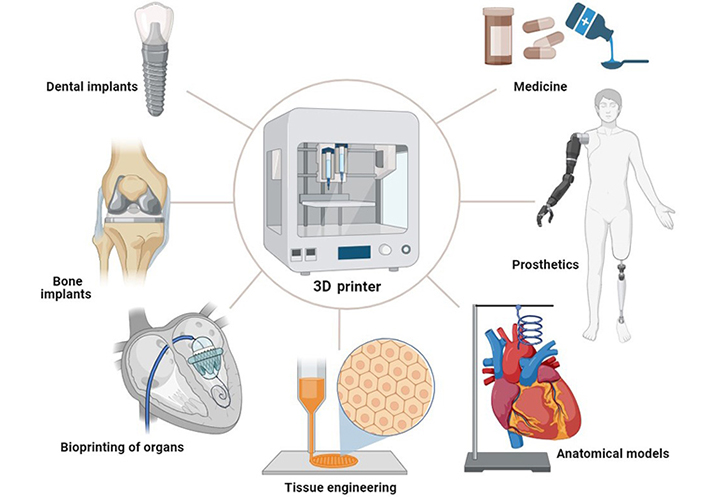
In the fast-evolving world of medical technology, innovation, precision, and speed are essential. 3D printing — or additive manufacturing — has emerged as a game-changing tool in the development of medical devices, from patient-specific implants to rapid prototypes for regulatory testing.
At the forefront of this transformation is Boona Prototypes, a leading provider of high-precision 3D printing and prototyping services. Their cutting-edge capabilities enable medical manufacturers to shorten development cycles, improve performance, and reduce production costs.
In this article, we explore five key benefits of 3D printing in medical device development, along with relevant data and how companies like Boona make a difference.
I. Patient-Specific Customization
Unlike traditional manufacturing, 3D printing allows for mass customization at scale. By using patient imaging data (like CT or MRI scans), developers can produce anatomical models and devices tailored to a specific patient’s physiology.
This is especially impactful for:
-
Orthopedic implants
-
Dental prosthetics
-
Hearing aids
-
Craniofacial reconstruction
Boona’s SLA and SLS 3D printing technologies make it possible to manufacture high-resolution components with complex geometries that perfectly match patient needs. Learn more about their capabilities on the SLA Prototyping Services page.
II. Rapid Prototyping and Iterative Design
One of the standout advantages of 3D printing is its ability to speed up prototyping cycles. Designs can go from CAD files to tangible models in just 1–3 business days, significantly accelerating the development process.
Here’s a quick comparison:
| Process Stage | Traditional Machining | 3D Printing (e.g., SLA/SLS at Boona) |
|---|---|---|
| First Prototype | 2–4 weeks | 2–3 days |
| Design Iteration | 5–10 days each | 1–2 days each |
| Total Development Time | 2–3 months | 3–4 weeks |
Using 3D printing for early prototyping helps design teams test ergonomics, usability, and performance before investing in tooling. Boona Prototypes provides functional medical-grade samples with excellent surface finishes for clinical trials and feedback loops.
III. Complex Geometry and Design Freedom
Medical devices often require micro-scale detail, internal channels, or porous structures for tissue integration — which traditional manufacturing methods struggle to produce.
3D printing supports these designs with:
-
Hollow or lattice internal structures
-
Microfluidic channels for diagnostics
-
Drug-eluting device geometries
-
Lightweight structures for implants
Boona Prototypes’ 3D printing services enable engineers to experiment with advanced geometries and integrate multiple functions into a single component — reducing assembly steps and part count.
IV. Cost Efficiency and Low-Volume Production
Tooling and molds are expensive — particularly for early-stage products or custom one-offs. 3D printing bypasses this entirely, offering on-demand production without setup fees.
Key cost-saving scenarios include:
-
Clinical trial devices in small batches
-
Temporary implants or surgical guides
-
Patient demo kits for pre-approval use
-
Functional mockups for investor presentations
Boona’s flexible production model helps startups and OEMs avoid excess inventory while still achieving fast turnarounds. Their Rapid Tooling and Low-Volume Manufacturing services also allow for seamless scale-up after initial success.
V. Enhanced Surgical Planning and Education
Surgeons are now using 3D printed models of patients’ organs and bones for pre-operative planning and simulation. This is particularly valuable in complex procedures like tumor removal or spinal corrections.
Educational benefits include:
-
Realistic anatomy training models
-
Hands-on surgical rehearsal tools
-
Communication aids between doctor and patient
Boona’s precision materials and finishing techniques ensure these models are anatomically accurate and durable, ideal for operating room preparation or classroom demonstration.
VI. Bonus: Quality Materials and Biocompatibility
3D printing for medical use isn’t just about speed — material choice is critical. Boona Prototypes offers a range of engineering-grade and biocompatible materials, including:
| Material Type | Application | Properties |
|---|---|---|
| Medical Resin | Surgical guides, dental tools | Sterilizable, ISO 10993 compliant |
| Nylon (PA12) | Orthopedic bracing, functional parts | High strength, flexible |
| Transparent Resin | Microfluidics, dental aligners | Water-clear, polishable |
| TPU/Elastic Resin | Catheter components, seals | Rubber-like, skin-safe |
For more technical details, check Boona’s full Material Options page.
Final Thoughts
The medical device sector demands fast, reliable, and patient-centered solutions — and 3D printing delivers on all fronts. Whether you’re developing a new surgical tool, a wearable sensor, or a custom implant, additive manufacturing unlocks new levels of innovation and agility.
With advanced services from Boona Prototypes, you can move quickly from concept to clinical validation — without compromising on quality or performance.
Ready to accelerate your medical device development?
Explore Boona’s Medical Prototyping Services to get started today.
FAQs
1. What types of medical devices can be made using 3D printing?
3D printing can be used to create a wide range of medical devices, including customized implants (e.g., orthopedic and dental), surgical instruments, anatomical models for surgical planning, prosthetics, hearing aids, and even drug-delivery systems. Companies like Boona Prototypes offer precision additive manufacturing for all these applications.
2. How does 3D printing improve the speed of medical device development?
With 3D printing, prototypes can be produced directly from CAD models in just 1–3 business days, enabling faster iteration and testing. This drastically reduces the development timeline compared to traditional machining. Boona Prototypes, for example, specializes in rapid prototyping with quick turnaround.
3. Is 3D printing suitable for mass production of medical devices?
3D printing is ideal for low-volume production and custom devices. For mass production, it is typically used for tooling or pilot runs. However, with the right materials and regulatory compliance, it can support scalable manufacturing for niche or patient-specific products. Learn more about Boona’s low-volume manufacturing services.
4. Are 3D printed medical devices safe and biocompatible?
Yes, when made using certified materials and processes. Biocompatible resins, such as those compliant with ISO 10993 or USP Class VI, are used for surgical and patient-contact applications. Boona Prototypes offers a range of biocompatible and engineering-grade materials to meet regulatory standards.
5. How does 3D printing support personalized medicine?
3D printing enables the fabrication of devices tailored to an individual’s unique anatomy, using data from CT or MRI scans. This improves fit, comfort, and clinical outcomes. Boona Prototypes provides custom medical prototyping to support personalized healthcare solutions.
6. What are the advantages of using Boona Prototypes for 3D printed medical parts?
Boona Prototypes offers high-resolution SLA and SLS 3D printing, fast turnaround times, expert design support, and a variety of certified materials. Their services cover everything from design to low-volume production, making them an ideal partner for medical device developers.
7. Can 3D printing reduce medical device development costs?
Absolutely. 3D printing eliminates the need for expensive molds or tooling, especially for early-stage development, custom parts, or limited production runs. It also reduces material waste by using only the necessary amount for each part.



